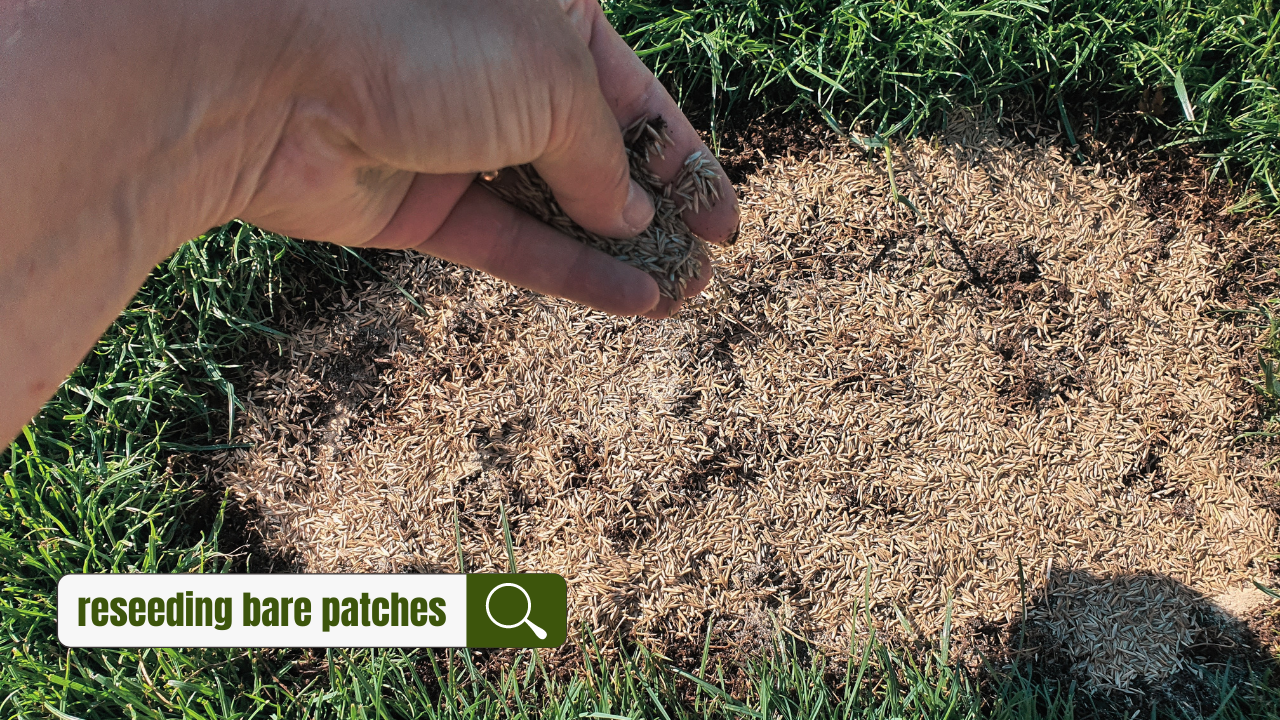Chinch bugs are no stranger to many homeowners throughout the country. These common lawn pests are notorious for killing turfgrass, especially in July and August when temperatures get hot.
When left untreated, chinch bugs can cause extensive damage to your lawn. They are known to aggregate and feed on the grass by piercing the plant to suck all the plant juice. They release enzymes that will continuously damage your plant– causing it to turn brown and ultimately die. So if you are burdened by the sight of dead patches on your lawn (despite regular watering), you may want to look into a potential chinch bug infestation.
How to Tell if There are Chinch Bugs on Your Lawn
If you still find localized areas in your lawn with dry-looking grass despite regular watering, chinch bugs lurk underneath.
You’ll need to look closely to find traces of chinch bugs in the grass to confirm this. Adult chinch bugs are black and often have white wings. They are commonly spotted near the grass blade base or edges of a damaged lawn area that meets the otherwise healthy grass.
5 Ways to Get Rid of Chinch Bugs in Your Lawn
Getting rid of chinch bugs starts with regular lawn management, which includes the likes of mild fertilization and keeping the grass outgrowing.
1. Encourage beneficial Insect Predators
Having beneficial predators visit your lawn may help naturally control the chinch bug population. For your reference, here are some insects that feed off chinch bugs:
2. Use a Broad-spectrum Pesticide
Fortunately, the majority of turf-type pesticides are effective in eliminating chinch bugs. Always check the label and follow the proper application instructions to ensure optimal results. Some pesticides may suggest mowing before the actual application, while others may need you to water the lawn rigorously first.
While this effectively kills the chinch bug population on your lawn, pesticides will leave their eggs unscathed. Several products will require two separate applications: first, to kill any thriving bugs, and second after several weeks, to kill chinch bugs that hatched from eggs.
3. Use Chemical-free Alternatives
Homeowners looking for a more eco-friendly treatment option to the traditional pesticides may use Diatomaceous earth (DE), a natural product made from pulverized fossils. Although it has a soft and powder-like appearance, its particles are notably razor-sharp to pierce through the bodies of insects it comes in contact with. Not to mention, DE is a desiccant, which causes the pests to dehydrate and ultimately die a few days after contact.
4. Avoid Overfertilizing
As you control the chinch bug population on your lawn, avoid overfertilizing. Remember that excessive nitrogen may only increase the severity of the infestation. It may result in more extensive issues, such as fertilizer runoff.
5. When Mowing, Cut no more than ⅓ of the Grass Blade
We know how mowing helps in making your lawn appear lush and smooth. But cutting more than one-third of the grass blade will only stress the turf, making it more prone to pest infestations. This often translates to mowing the yard twice a week (instead of just once) during its growth period in spring and rainy/wet seasons.
The Proper Way to Deal with Chinch Bug Infestation
Since chinch bugs are attracted to heavily-thatched, stressed lawns– make it a goal to keep your turf adequately irrigated and dethatched. Here are other good lawn care practices to follow in dealing with chinch bug damage and warding off future infestations.
Fertilize Properly
In the early spring, it would be best to fertilize your lawn using an all-purpose lawn fertilizer every two months until the grass enters dormancy in the late fall. Most turf must receive at least one inch of water in a week.
If you're dealing with periods of intense drought and heat, you may want to increase your lawn watering frequency more than once weekly.
Reseed the Bare Spots left by Chinch Bug Damage
Once you get rid of the chinch bugs thriving on your lawn, it's time to reseed the bare patches left behind. Standard grass seed will work just fine, but you may want to consider an endophyte-enhanced grass seed suitable for the grass type found in your lawn for extra protection against future infestations.

Endophyte-enhanced seeds for ryegrass and tall fescue lawns are designed to repel insect damage and possible fungal diseases effectively.
Dethatching the Lawn
Thatch refers to the mat of dead grass found at the base of the grass blades. It is always a good practice to keep your lawn dethatched, regardless of whether you have chinch bugs. A dense thatch layer efficiently prevents air and sunlight from reaching the grass blade's bottom, resulting in a deteriorated lawn.
Dethatching also makes the grass less appealing to harmful lawn pests. Taking out the thatch also reduces the likelihood of female chinch bugs laying their eggs on your lawn. It also prevents these pests from overwintering in the yard.
Proper Lawn Irrigation
Ensure to irrigate the lawn following the proper schedule, depending on your particular lawn type and location. Notably, chinch bug activity declines in areas with frequent natural rainfall– given that chinch bug nymphs drown in the water.
Mow the Lawn to the Right Height
Regular lawn mowing and keeping its height suitable for the grass species recommendation helps deal with your post-chinch bug damage control. This helps retain moisture in the lawn and soil. As it moderates the temperature in the soil, chinch bugs are likely to be discouraged from moving in as they are more fond of hot and dry environments.
Conclusion
Excessive damage brought by chinch bug infestation can be mistaken for drought stress. Therefore, it may not be treated appropriately in some cases. Trust us– making that mistake is the last thing you'd want for your lawn. Identifying, treating, and eliminating chinch bug presence in your lawn is crucial. It would help if you acted on the matter at once instead of waiting it out, as more extensive chinch bug damage can be costly and difficult to repair.
We recommend speaking to a local lawn care specialist to help you fix the damage left behind by pesky chinch bugs and help you do preventative measures to avoid their unwanted recurrence on your lawn.
(Related: Our Chinch-Free Outdoor Greenscapes to Start June Right)
Frequently Asked Questions
What is a chinch bug?
Chinch bugs (Blissus leucopterus hirtus) are prevalent lawn pests. Because they are tiny (typically less than ¼ ) and challenging to see, their numbers can quickly grow to a full-blown infestation before you detect them.
Chinch bugs have been prevalent in the United States since the 18th century. Other bug species target corn, wheat, and sorghum crops, whereas the hairy chinch bug eats turfgrasses of all kinds.
Do chinch bugs prefer certain types of turfgrass?
Several common turfgrasses are favorites of the hairy chinch bug, including: Bentgrass, fine fescues, Kentucky bluegrass, Perennial ryegrasses, and Zoysiagrass. If you have a lawn with various grass types, as many people do, chinch bugs will be attracted to a mix that contains more than 50% Kentucky bluegrass.
How do I know if my lawn has chinch bugs?
Look for telling indications of chinch bug damage in your lawn, such as dry, dead places or dispersed regions of grass. These areas frequently expand and combine into larger damage sections.
Chinch bug damage might resemble drought stress at first glance, and it often goes undiscovered. Many individuals increase their lawn irrigation when the problem becomes noticeable, assuming that the insect damage is due to water stress. More water, however, will not address the situation.
How do chinch bugs kill lawns?
Chinch bugs penetrate grass blades with their piercing mouthparts, causing significant damage to your lawn. After piercing the grass, the bugs suck out the leaf secretions, drying up the grass blade. While feeding, the bugs also produce poison that can destroy the grass. The grass blades perish and die as a result of the feeding damage. The damaged areas will get more prominent as the chinch bugs multiply and spread over your lawn.
When do chinch bugs usually appear?
Chinch bugs hibernate in the thatch of your grass and emerge when the weather gets warmer up in the spring. Chinch bugs enjoy the heat, so their populations will thrive by late spring or early summer.
Adult female chinch bugs will have laid eggs for the year's second population by mid-summer, and the eggs will hatch in late summer. Because chinch bug damage occurs as temperatures rise and stress, cool-season lawns remain dormant, and individuals may have difficulty identifying chinch bugs as the reason for their dead turf.

